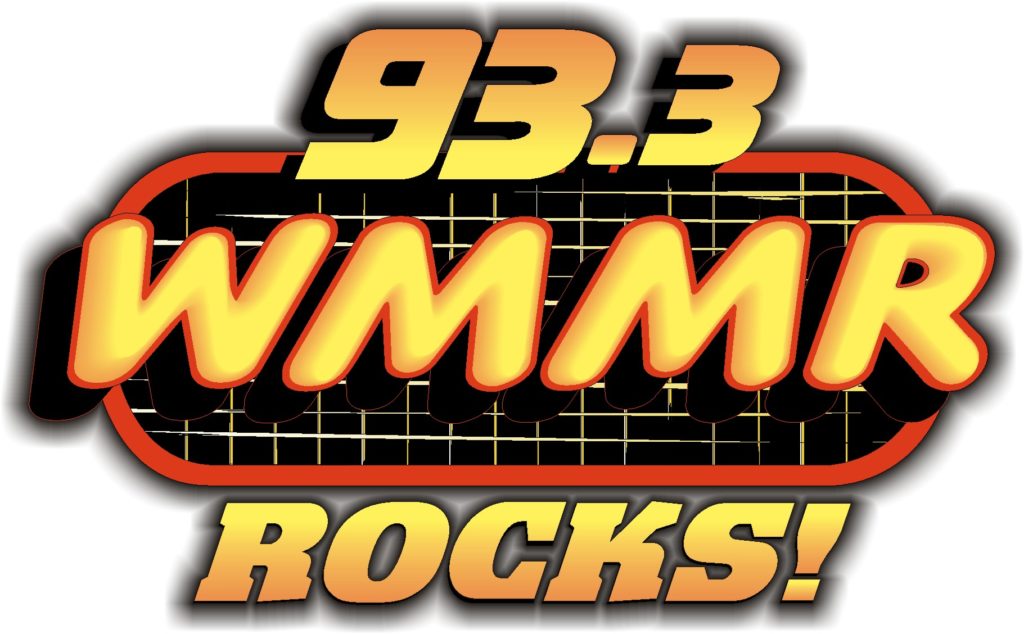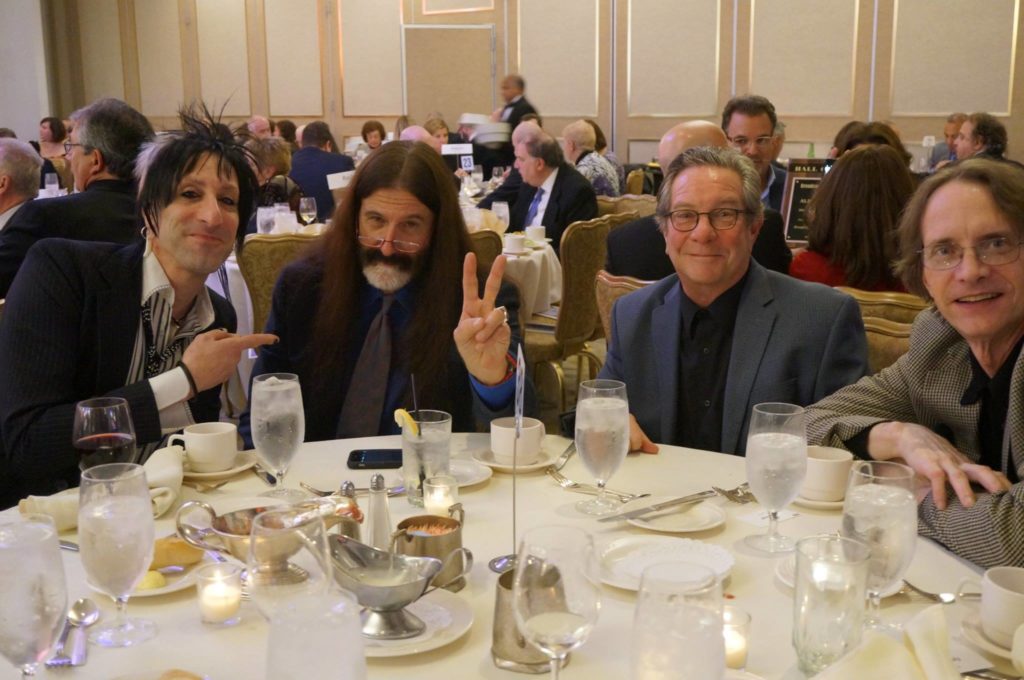
In this blog, we often talk about the full array of programming content – personalities, music, news, and all the digital products stations are now producing. But the one piece of the pie that is often ignored is the advertising.
Jerry Lee has been a voice in the wilderness when it comes to improving the commercial message. Ironically, he has a kindred spirit just down the street at Beasley Broadcasting/Philadelphia in Kevin Gunn who is a staunch believer in the power of great commercial creative.
Kevin was born and raised in the City of Brotherly Love, and is a 25-year veteran of WMMR, first as a morning show producer and now as Creative Director. Over the course of his career, he’s also written for John Madden, Bob Costas, Scott Muni, John DeBella, Pierre Robert, Charlie Kendall, and other radio luminaries. He’s best known to his wife Sheri, and children Ryan and Meaghan as the guy most likely to make up R-rated song parodies at the dinner table.
Consider radio’s business model: Programming, production, and promotions execute the product. Sales takes the results to clients, who pay to share in the process. But if the sales/client consortium consumes roughly 20% of the broadcast hour, they’re responsible for that percentage of the overall product. So they need to consider how their portion of the product affects the overall performance of the station.
Plainly stated, if, for whatever reason, spots are off-putting, listeners will flee and everyone is hurt. Playing the ‘money’ card (“Hey, I know it sucks, but it pays the bills.”) isn’t a good enough excuse to put a bad commercial on the air—at least, not without a conversation. Below are five factors that we consider when writing, and then producing spots for our clients. Because I contend that what they say is every bit as important as what they pay.
1. You Had Me at “Hello.”
I once started a breast augmentation spot for a plastic surgeon that read, “Half the population gets ‘em. And the other half can’t seem to get over them!” It’s an example of how pivotal the first line of any spot can be. If you air a spot that starts “Attention steamfitters.” you can bet that the majority of your audience that are not steamfitters are gone.
I try not to narrow the audience at the start of a script. I’d prefer to capture everyone’s interest with something they’ve never heard before, or at least entertains them, until I can make the client’s case. The hope is, they’ll stay with the spot, and then tell the steamfitter they know about what they heard.

2. Efficiency
Understand this: A thirty-second spot is twice as hard to write as a sixty. You have half the time to make your point. So economy and efficiency in writing spots has never been more important. ‘THIS SATURDAY NIGHT, JANUARY 14TH” AT 8:30 PM” needs to be (“NEXT/THIS) SATURDAY NIGHT AT 8.”
The only things I’ll repeat are the call to action, price points or the web address. Efficient scripts are only achieved by constantly whittling the copy down to its leanest possible incarnation. Tell your story, entertain when possible, and keep it straightforward and relevant. Give your listeners the benefit of the doubt and maximize every syllable.
3. Sometimes, Their Baby’s Just Ugly
Even though the spot he just recorded was 74 seconds, the client said he couldn’t cut a thing because his wife wrote it and he’d hear about anything deleted. I time-compressed the spot to let him hear what wifey had wrought, and he relented, begrudgingly. A clear case of “Your money or your wife.” Sales folk don’t want to tell their clients that their spots are wandering, wordy and more-than-likely ineffective. But if commercials are 20% of every hour, it’s often left to programming gatekeepers to speak up or risk further tune-out.
I pride myself on offering alternatives and solutions. I can say “This sucks,” or “I can re-work it and show how a better spot aids everyone.” I’m proud to say that we’ve had a copywriting program in place, so an account rep can hire me for a small stipend to craft a script with a fighting chance.
Sellers sell, writers write. Play to your staffer’s strength. If you’ve got a staff member who can write, and they’re not involved in the process, get them involved. And pay them for their talents.

4. Write for the Ear
Writing for audio means the words need to be spoken, and spoken convincingly. So if a script is sent to production without being read aloud by the writer, the job’s only half finished. You’ve got to write it like you’d say it, because in our business, it’s got to be read aloud to be heard, and heard to be persuasive.
So avoid the comfort of clichés and state your case like you’d tell a friend. And since I invoked the “C” word, clichés like “What are you waiting for?” or “Tons of prizes” or saying “Don’t Forget,” before you even told them in the first place, are insulting to the consumer and eat up precious time with no payoff. My theory is that clichés are comforting to the eye, and warm the heart of a non-confident writer. Lose ‘em and speak real.
5. Get ‘Em to the Website
To me, the single biggest and best evolution in copywriting is the goal of just getting the listener to the client’s website. Rare is the business that buys radio that doesn’t have some sort of presence online. So unless a phone number is mandatory for tracking purposes, the sole goal of the spot is to get the listener to the client’s website.
Two great things happen as a result. The spot/script can be more branding and entertaining than the white noise script that triestojameverythingttheclientoffers into one long, overly caffeinated read. And if the spot is intriguing enough, the consumer will go to the ‘easier-to-remember-than-a-phone-number’ website, where the client has invested time and money to state their entire case to any prospective customer.
Postscript: These are my opinions and approaches only and not intended to reflect those of anyone for whom I work, or have worked. Thanks for reading!
More Guest Lists
- Chris Peterson: 5 Podcasting Predictions
- Steve Goldstein: 6 Ways Podcasts Are Different Than Radio
- Greg St. James: 5 Lessons Radio Can Learn From C-SPAN
- John O’Connell: The 5 Biggest Challenges Launching a New Radio Station
- Matthew Lasar: 6 Pivotal Moments in the Internet Radio Era
- What To Do If Your Radio Station Goes Through A Midlife Crisis - April 25, 2025
- A 2020 Lesson?It Could All Be Gone In A Flash - April 24, 2025
- How AI Can Give Radio Personalities More…PERSONALITY - April 23, 2025





That’s a great reminder! TY!
Appreciate the comment, Max.
Never use numbers, especially phone numbers. People don’t buy what they “need”. They buy what they “want”. And never end an English language spot with “se habla espanol.”
Thanks, Joe.
It took me half a beat, but that first line for the breast augmentation surgeon made me laugh out loud – brilliant wording. This was a really helpful and well considered post in general. Thanks Kevin!
Thanks for commenting, Justin.
Always great to see these reminders. Production Directors need to have a good relationship with sales manager and GM. That will help them fight the good fight. Also in this era of 140 characters why are :60’s even still a thing?
The advertising community thinks in (sometimes) strange ways, Jason. Between :60s, piggybacks, and just bad quality spots, there are a lot of impediments in those spot clusters. That’s why guys like Kevin are so valuable.
Amen, Brother Gunn.
Tom, I know Kevin speaks for a lot of production pros out there.
Like a Stones Song…Hit them with a killer guitar lick at the beginning/promise benefit – Bridge in the middle/offer – end with the hook/call to action!
Don’t beat around the bush. Get to the hook fast!
“Satisfaction” at the beginning – middle – end
Don’t ask questions.
Wanna lose weight?
Better: Lose 10 pounds in a month guaranteed with…
The writing is the art. Frame it with some nice production! But don’t get the frame confused with the art.
A well written spot with decent production will outperform a poorly written spot with excellent production!
BP
Great tips here, Bill. Thanks for the comment and for reading our blog.
Excellent points, especially for those who’ve doing this a long time. In the words of REO, we gotta “Roll with the changes”!
Many thanks, Mark. We’ve gotten a great response to Kevin’s “Guest List” post.
As the daughter of a radio producer/VO artist who was known for re-writing the copy he was handed on the spot – and improving it – I gotta say Kevin’s guidelines are dead-on.
I now work for a company that writes the audio news releases that get embedded in public affairs programming (One of our programs runs on WMMR-FM) – a little different from commercials, but many of the same ideas apply.
Writing well for the ear is absolutely an art, and something we really focus on with the interns coming to us from Journalism, Communications and English programs. Not every university has a radio station or a prof on staff with broadcast experience. We teach our interns that audio requires more description than TV because your audience can’t rely on pictures to understand what’s happening. It requires more clarity than print because your audience can’t go back and “re-read” what they just heard. Add on to that the time limitations of :30 or :60 seconds and no wonder that there are a lot of “ugly babies” out there.
And whether in advertising or public relations, we all struggle with how to communicate the need for revisions to clients. We just posted a list of guidelines for our clients that includes this step:
Step 3: Story, story, story. Oh, and story.
Treat your spot as a story that you are telling.Good stories are succinct and have three parts: a beginning, middle and end.
Beginning: The opening narrative should grab the attention of listener. Get right to the point- what makes your story newsworthy, relatable and relevant?
Middle: This is where you establish your authority and expertise – often with a soundbite from an expert. Enhance your story with facts, figures, examples.
End: Use a strong conclusion that reiterates the essence of your message. Finish with a call to action.
https://goo.gl/nKTBxw
Erin, thanks for the insightful comment and tips. This is good stuff and very helpful. Appreciate you chiming in.
I learned a LOT from this blog, Fred. It is always good to be reminded about brevity, clarity and getting the essence of a message. Thank you.
Many thanks, Linda. Glad it has value for you.
That’s a savage and smart man right there. Oh, and for god’s sake, leave the comedy writing in spots to those who can actually write comedy.
Many thanks, Lu, and a good piece of advice!
Great point about websites and reading copy aloud. Brilliant! Most people don’t enter a url in their browser. To much work. Instead they google something easy to recall and click the link. We did a jingle For The Pink Plumber that sings: “Google Pink Plumber and click the link” with tremendous results! Thank you for a great post Kevin and Fred.
Hey, it’s all Kevin Gunn, Rich. I had the day off! Thanks for the comment.
As you mentioned, it is important to be efficient and to the point when you have a short time to fill. My uncle is wanting to run a commercial for his auto body shop, but isn’t sure how to go about doing that. Is there a advertising group that could do it all for him?
You might want to check out a local ad agency. Or if you work with a radio station or group of them, they would have a production director that would likely handle most of this.